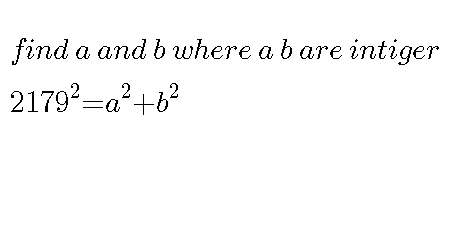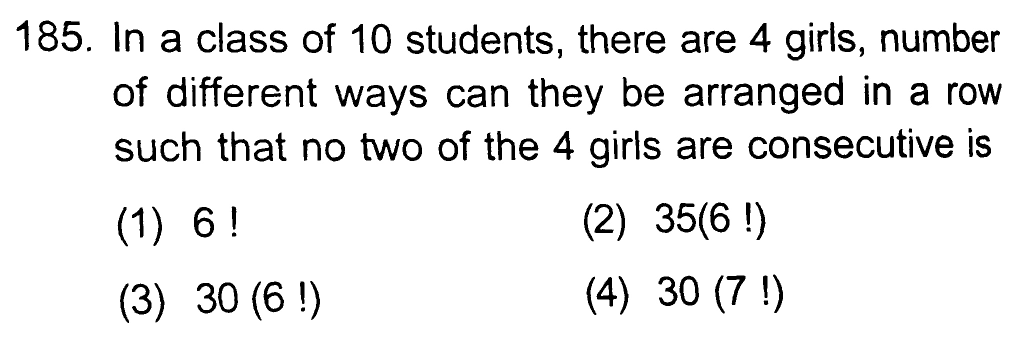
Question and Answers Forum
AlgebraQuestion and Answers: Page 329







Pg 324 Pg 325 Pg 326 Pg 327 Pg 328 Pg 329 Pg 330 Pg 331 Pg 332 Pg 333
|
Question and Answers Forum |
AlgebraQuestion and Answers: Page 329 |

|
| If z^3 =z^ prove then ∣z∣=1. |
| g_n =(√(g_(n−1) +g_(n−2) )) g_1 =1 g_2 =3 g_n =.. |
| a_n =2a_(n−1) +3a_(n−2) a_0 =1 a_1 =2 a_n =... |
| find Re (((1+e^(iα) )/(1+e^(iβ) ))) and Im ( ((1+e^(iα) )/(1+e^(iβ) )) ) . |
| The number of distinct real roots of equation x^4 −4x^3 +12x^2 +x−1=0. |
| If : (x^2 +x+2)^2 −(a−3)(x^2 +x+1)(x^2 +x+2) + (a−4)(x^2 +x+1)^2 =0 has at least one root , then find complete set of values of a. |

|

|
| Let a>b>1 be positive integers with b odd. Let n be a positive integer as well. If b^n divides a^n −1, prove that a^b > (3^n /n). Solution please. Thanks in advance!! |
| Range of function : f(x)= 6^x +3^x +6^(−x) +3^(−x) +2. |
| Let S_n = Σ_(k=1) ^(4n) (−1)^((k(k+1))/2) k^2 . Then S_n can take the value(s) 1) 1056 2) 1088 3) 1120 4) 1332. |
| A quadratic equation p(x)=0 having coefficient of x^2 unity is such that p(x)=0 and p(p(p(x)))=0 have a common root then, prove that : p(0)×p(1)=0. |
| Consider a sequence in the form of groups (1),(2,2),(3,3,3),(4,4,4,4), (5,5,5,5,5),............ then the 2000th term of the above sequence is : ? |
| please find the integral solutions (x and y) (xy−7)^2 =x^2 +y^2 |
| Let a_1 = (1/2) , a_(k+1) =a_k ^2 +a_k ∀ k≥ 1. then a_(101) is greater than a) 1 b) 2 c) 3 d) 4 . |
| 24x^3 −26x^2 +9x−1=0(solve) |
| how many roots from equation ae^x =1+x+(x^2 /2) from a>0 ? |
| ∼ Equivalence relation (a∼b & c≁b)⇒c≁a True or false and why |

|

|

|

|
| let p(x)=(1+x+x^2 )^n −(1−x+x^2 )^n ∈C[x] 1) find the roots of p(x) 2) factorize p(x) inside C[x]. |
| find the polynial p wich verify p(x)−p^′ (x)=x^n then calculate ∫_0 ^1 p(x)dx. |
| find tbe value of Π_(k=1) ^n sin(((kπ)/(n+1))). |
Pg 324 Pg 325 Pg 326 Pg 327 Pg 328 Pg 329 Pg 330 Pg 331 Pg 332 Pg 333 |